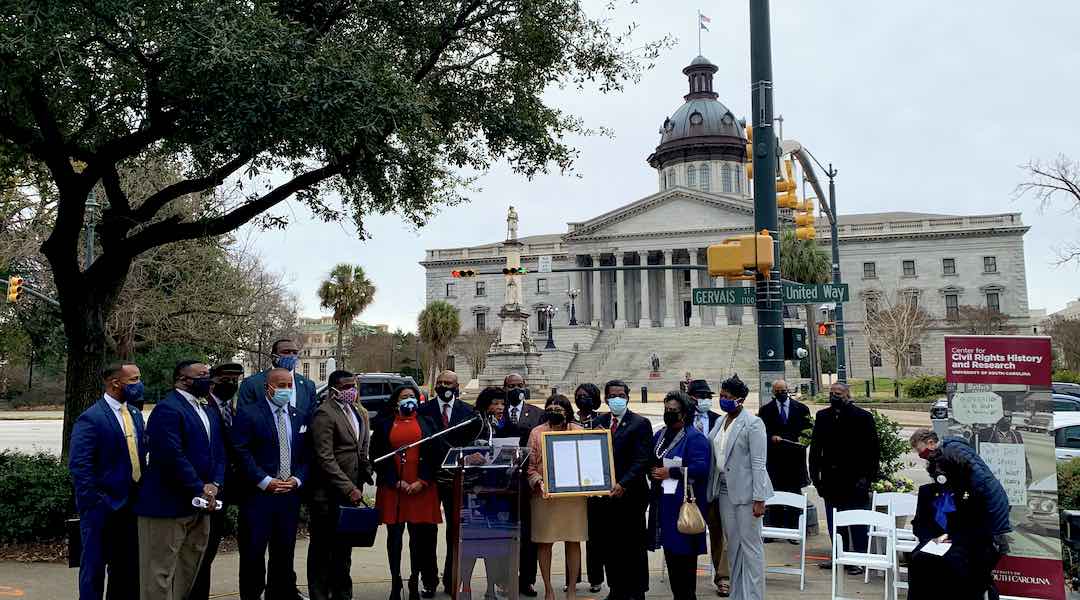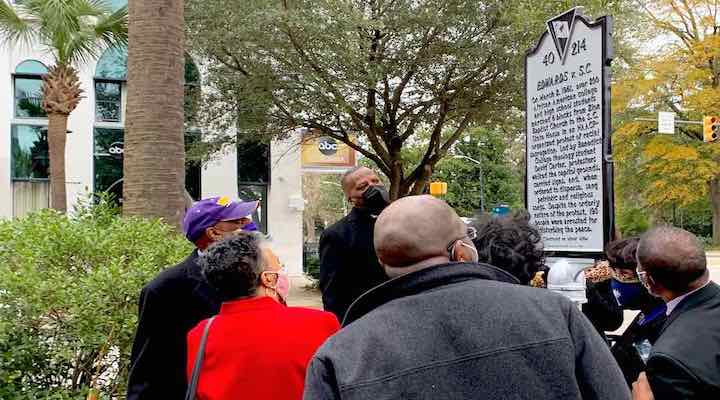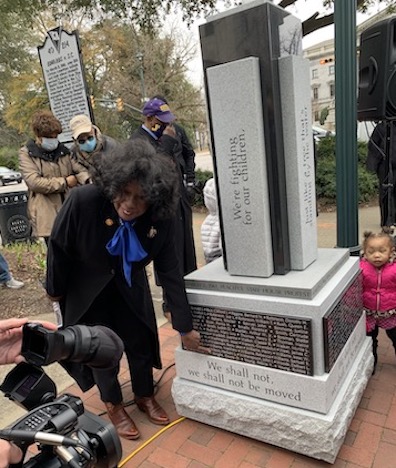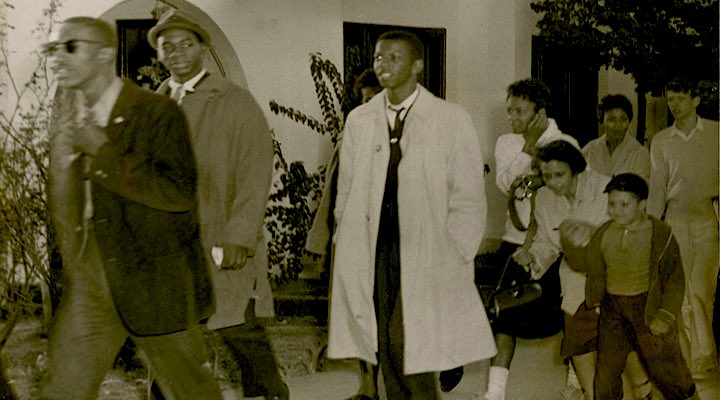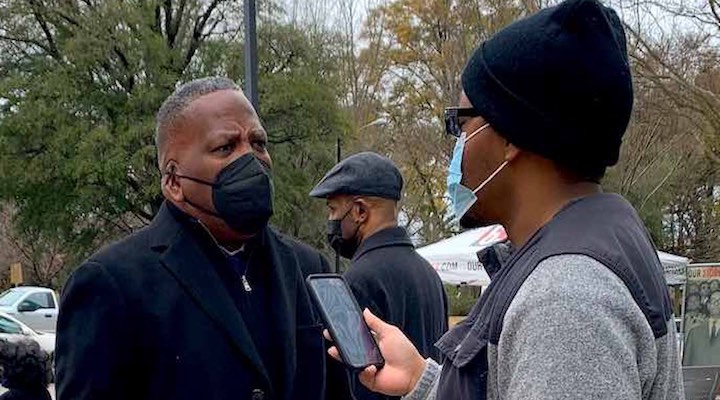Members of the S.C. General Assembly present a resolution during the commemoration ceremony. Rep. Leola Robinson-Simpson (D-Greenville), center, was one of the original protesters arrested during the 1961 march. Photos by: Alexandra Koch
South Carolina students marched to the State House protesting racial inequality on March 2, 1961. They marched peacefully, singing patriotic songs and advocating for equal rights. More than 180 protesters were unjustly arrested for “disturbing the peace,” igniting a legal battle over the rights of peaceful protesters that went all the way to the U.S. Supreme Court.
Tuesday morning, on the protest’s 60-year anniversary, the Center for Civil Rights History and Research at the University of South Carolina unveiled a new historical marker and granite monument at the corner of Gervais and Main streets commemorating the 1961 State House March.
DeeDee Wright, who participated in the 1961 march and attended the commemorative ceremony, remembers the day, 60 years later, as “scary.” Wright, who was just 16 years old when she marched and was arrested, served as president of the Youth Chapter of the NAACP in Greenville, S.C.
“I was young, energetic and fighting for equal rights under law,” said Wright. “I was put into solitary confinement and we were fed grits, white bread and what appeared to be dog food. It was a realization that you couldn’t walk to the capitol without being accused of disturbing the peace.”
James Edwards Jr., one of the students arrested, appealed the conviction. Two years after the protest, he was the lead plaintiff in the U.S. Supreme Court case, Edwards v. South Carolina.
The court ruled the arrests had violated the protesters’ First Amendment rights, setting a legal precedent protecting the rights of protesters. The ruling stated that states “may not make criminal the peaceful expression of unpopular views.”
Also among those plaintiffs: South Carolina State student Jim Clyburn, who went on to become a South Carolina congressman, House majority whip and the man credited with boosting the election of President Joe Biden.
At the commemorative ceremony, Edwards, who went on to become a minister, looked down Main Street, recounting the event. “I see us marching down the street over there, marching down to the capitol,” Edwards said. “We’ve still got a long way to go.”
Wright echoed his hope for more progress. “You can change people’s thinking, but you can’t change their hearts,” she said. “African Americans are human — we breathe, we bleed — and [I want] people to realize that we are entitled to the rights of this country.”
When asked what the commemoration meant to her, she said “it was the heart changing. It’s a validation that hearts really do change,” Wright said. “There is an old African proverb called “harambee,” a coming together. I think that’s what this moment is.”
Columbia Mayor Steve Benjamin, who spoke at the commemoration ceremony, said the 1961 student protesters paved the way for his career.
“These are men and women who committed themselves at a very young age to making it even possible that I might, 50 years later, decide I wanted to serve the city that I love,” Benjamin said.
Benjamin recognized that statues on South Carolina State House grounds honoring leaders with racist pasts have created controversy over the last few years.
“Monuments are not meant to deify mortals, but indeed they’re meant to recognize significant positive moments in our history,” Benjamin said. “It’s important to seek to diversify monuments and to tell stories that strengthen the fabric of a community — and that’s what we’re doing here today.”
However, Benjamin said there is still a lot more to do. “This is a growing movement that will stand in sharp contrast to the monuments on the State House grounds,” he said.
It is unclear where exactly the march monument that was revealed Tuesday will be placed, but it will not be on State House grounds.
Edwards said that if he had to give advice to students now, it would be to “get out and stand up for what’s right. Get in the fight and do it in a spiritual way, no violence.”
Commemoration ceremony attendees read the new historical marker located at the corner of Gervais and Main streets.
DeeDee Wright, one of the original protesters arrested during the 1961 march, points to her name on the new “We Shall Not Be Moved” monument.
Benedict College students James Edwards Jr. and Frederick Hart march to the State House on March 2, 1961. Photo courtesy: University of South Carolina
Columbia Mayor Steve Benjamin speaks with a reporter before the commemoration ceremony.

